Welcome dear knife enthusiast to another look into the world of knives with HDMD Knives! In this article we’re going to be looking at one of the most widely used Japanese knives – the Nakiri knife. This knife is the Japanese vegetable chopper, and we’re going to explain why.
There are several main types of Japanese knives, and the unfamiliar names and unknown uses can all become a bit perplexing for the home cook. This article will give you a clear and easy to understand overview of the Nakiri knife so that you can both buy and use it with the utmost confidence.
Table of contents
The nakiri knife – what is it?
A Nakiri knife is properly called a ‘Nakiri Bocho’ by the Japanese, and that means ‘knife for cutting greens’ or ‘leaf cutter’. The ones you’ll see for sale most predominantly are ‘Western Style’ Nakiri knives, this is because the knife has a double bevel blade to suit non – Japanese users and tastes. In terms of blade length, the usual size is 5 to 7 inches. The blade is very thin, and rectangular in shape, being straight – edged with a flat, blunted off tip.
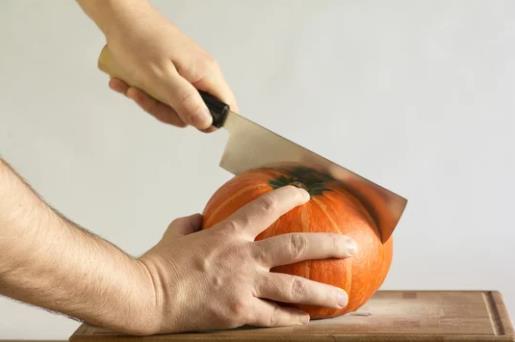
The straightness of the blade shape means you cut straight down through your vegetables, as opposed to rocking backwards and forwards as you would do with a curved knife blade.
The lack of a ‘sticking out’ tip to the Nakiri knife means you’re less likely to poke yourself accidentally and it also makes the end of the knife blade safer from chipping and damage.
The Nakiri knife looks very like a Chinese meat cleaver in appearance, but it has a much lighter blade because it’s used for cutting vegetable matter, not meat items that include bones, tendons, sinews and so on.
The light blade means that you can cut through even softer vegetables without crushing and damaging them.
Most home cooks and veg prep pros will get the most use out of a blade of around 6 ½ inches, it’s a good size for everyday use.
Single & double bevel – what does it all mean?
A knife bevel is the material that has been ground or worn away to form the knife’s edge. The angle or incline on 1 or more sides of the blade that runs down to the edge of the blade? That’s the bevel. Here’s a simple diagram to illustrate:
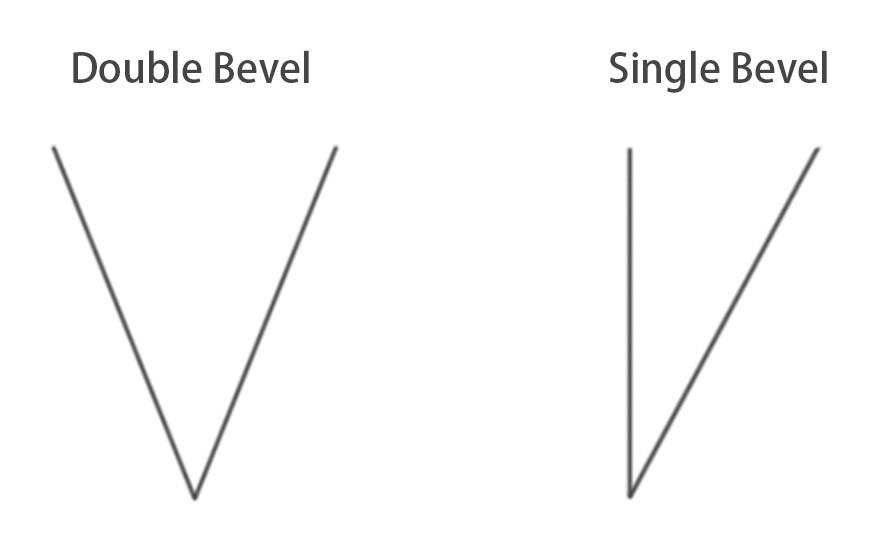
Japanese Nakiri knives are typically double beveled – ground down the same amount on both side of the blade to form a symmetrical or balanced edge. And in the case of the Nakiri knife, the blade itself is straight bladed, not curved.
What are nakiri knives made from?
The blade
Nakiri knife blades are made from any of the following materials, and they may be combined in 1 blade depending on the maker. A blade with combined materials may be referred to as having a ‘sandwich’ structure because it’s different materials ‘sandwiched’ together.
Here are some common Nakiri knife blade materials:
- Stainless steel
- Carbon steel
- Damascus steel
The handle
The Nakiri knife has a handle that can be utilitarian (meant solely for efficiency), attractive and pleasing to the eye, or a combination of those factors. The best Nakiri knives will have handles that both do the job and look good in your kitchen.
Here are some common Nakiri knife handle materials:
- Wood – walnut, maple, ebony, rosewood, bamboo, yew, or magnolia are all popular choices
- Stabilized Wood – this is wood that has been injected or infused with plastic to add durability
- Man – made composite materials – resins, synthetics, or polymers like Micarta™
- Metal – Titanium, stainless steel
- Tortoiseshell or Bone – usually cow or deer bone/antler because they’re readily available
What’s the history behind nakiri knives?
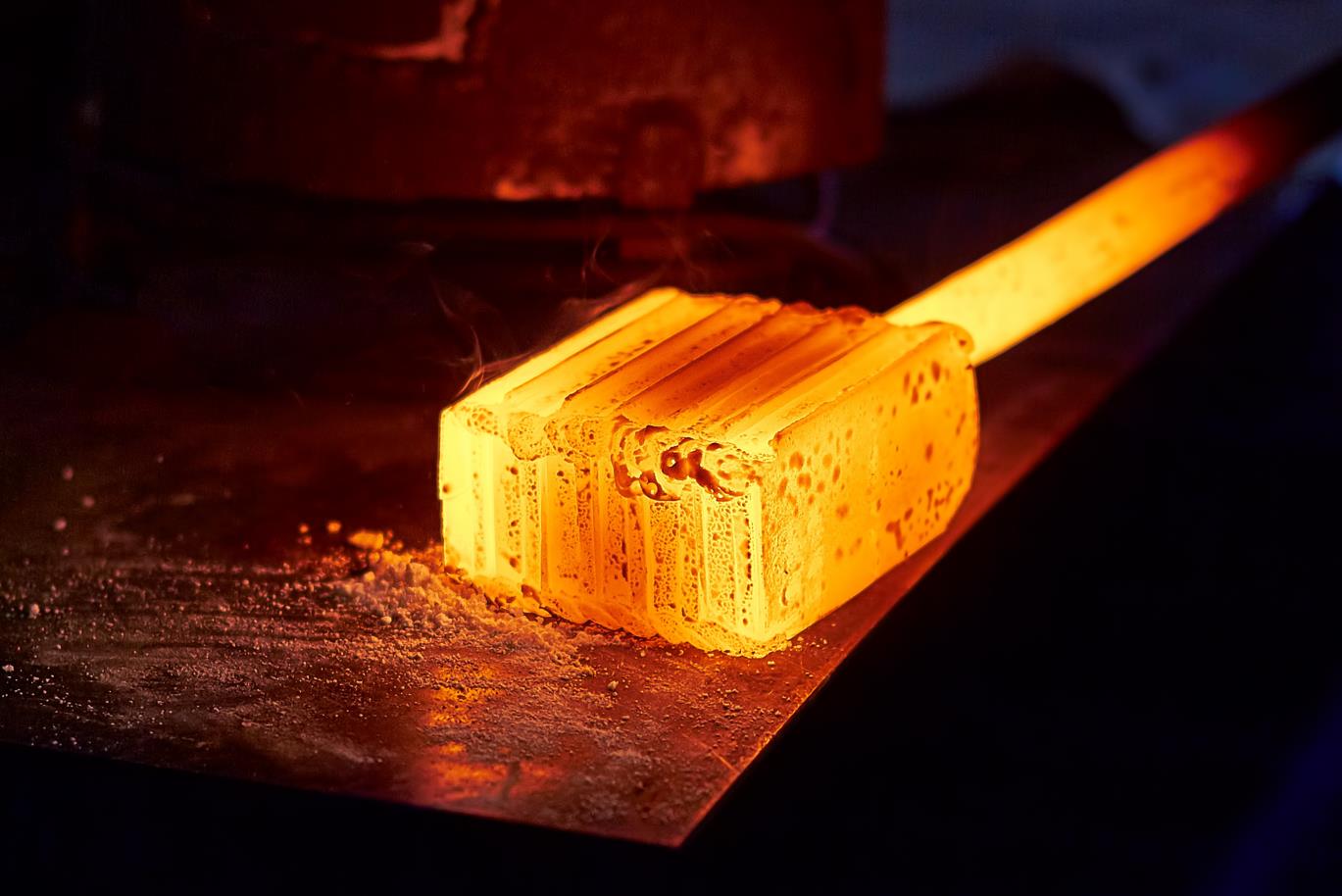
Nakiri knives originated in feudal Japan during the 17th century. Everybody knows how wickedly cool Samurai warriors were, well, the craftsman who made a Samurai’s katana sword would’ve been the same craftsman who created an elegant and functional Nakiri knife for a noble’s kitchens!
Before W.W.2 and the widespread exposure of Japan to Western influence, the Nakiri knife was the most widely used knife in Japan because up until then the Japanese diet focused mainly on vegetables, herbs and so on. The Nakiri knife was highly efficient at chopping vegetable ingredients so every Japanese kitchen that could have afforded a Nakiri knife would have owned one.
The Nakiri knife is a valuable component of any professional chef’s knife kit, particularly if they work with Asian cuisines or in vegetarian restaurants. Naturally, the Nakiri knife is as valuable to the home or amateur cook!
With the move today towards vegetarianism, veganism, and other plant – based diets, a razor – sharp steel blade Nakiri is so very useful and here are some ideas on how to get the most out of your Nakiri knife.
Your nakiri knife – what you’ll find it useful for
- Fresh vegetables – primarily leafy, stalked greens like daikon leaves; spinach; varieties of cabbage and kale
- Boneless or soft – boned fish
- Fruits, especially the softer kinds like pears and bananas
- Initial cutting for decorative garnishes
- Cheeses
- Soft cured meats (charcuterie)
- Mushrooms and woody herbs
- Sushi prep – especially for julienning vegetables or creating vegetable batons
- Teppanyaki and stir fry prep
- Dipping ingredients prep for a fondue
- Vegetable based stocks and soup prep
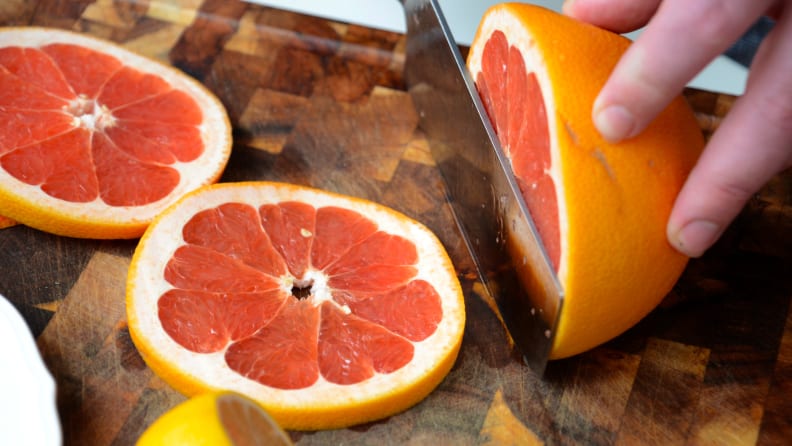
Pro tip: Because your Nakiri knife has a LARGE VERTICAL SURFACE, you can use it for scraping up ingredients on your chopping board and then transferring them to the pot!
Also, use that lovely flat blade to move piles of chopped ingredients like minced garlic etc. around on your cutting surface for easy space clearing.
Nakiri vs Usuba vs Vegetable cleaver
Let’s go into more detail with the functions of the Nakiri knife and compare it to two of its closest compatriots – the Usuba knife and the Vegetable Cleaver or Cai do. All of these are knives that you can find at any reputable knife supplier, but there may be confusion as to which tool to use for which task, and we don’t like confusion in the kitchen!
Let’s tabulate our way towards greatness friends!
| KNIFE TYPE | NAKIRI KNIFE | USUBA KNIFE | VEG CLEAVER |
| Blade Length | Average 5 – 7 inches | Average 7 – 9 ½ inches | Average 7 – 8 inches |
| Shape | Rectangular, blunted tip | Rectangular, flat nose to blade | Rectangular, straight edge to end of blade |
| Weight | Average 4 ½ ounces | Average 10 ounces | Average 12 ounces |
| Beveled | Double | Single | Double |
| Uses | Mainly veg but multi – purpose | Mainly veg – finer slicing/garnishes | Tougher veg and boneless meat, also fish |
| Avoid | Bone and very hard vegetables | Bone and very hard vegetables | Tougher veg okay, but avoid bones |
| Skill Level Required | Easy | Can be difficult to use and sharpen due to single bevel blade | Takes practice but balanced blade & weight = good control |
| Country of Origin | Japan | Japan | China |
Note: All three types of chopping knife are available in a range of sizes, we’ve given the approximate and most common sizes here for ease of reference.
Protecting your investment – how to care for your nakiri knife
Cleaning
Firstly, always clean your Nakiri knife immediately or soon after it’s been used. This knife should never be washed in an automatic dishwasher, but rather gently cleaned by hand in warm soapy water. A dishwasher will ruin the edges of your Nakiri knife blade and may even change the chemistry of the blade itself, leaving it vulnerable to things like rust.
Harsh dishwashing salts/detergents and high temperatures in a dishwasher simply do your knives no good AND will likely void any guarantee you have on the knife.
Your Nakiri knife and indeed any ‘good’ knife should be dried immediately and thoroughly after washing, and now and again a tiny drop of mineral oil can be rubbed into the dry blade to preserve it.
In general knives should always be placed in a separate area near to the sink and washed on their own, not with other cutlery or dishes. Washing your knives separately prevents chipping/damage to their blades, and hectically sharp knives can ‘hide’ amongst other items in the sink and give you a nasty cut.
In a pro kitchen a golden rule is – ‘no sharps in the sink!’ and this is because kitchen pros have suffered enough cuts in a soapy water filled sink to know what they’re talking about!
Sharpening your nakiri knife
For best results when sharpening nakiri knives and indeed any good quality knife, a recommended method is to use a sharpening stone or whetstone. Whetstones can be purchased from any knife retailer with a good range of care and maintenance products.
Method: Very simply, you’re going to slide the blade edge of the nakiri along and across the prepared whetstone (check for preparation instructions on the whetstone packaging), in a smooth and fluid motion, with light and consistent pressure. You’re looking for a 15 – degree angle from the stone’s surface, you can see the diagram below for reference:
5 strokes on each side of the blade should be more than sufficient as the Nakiri blade is thin to begin with and you don’t want to cause damage by over–sharpening.
NB: Whetstones often need either water or mineral oil as a lubricant, add this first before applying your precious Nakiri knife blade!
Remember, you must use the same number of strokes on both sides of the blade, this keeps the honing and edge balanced. So, if you give 4 strokes on the one side, it’s 4 strokes exactly on the other side. Nice and easy to remember – on a dual/2 bevel knife, you always match the number of sharpening strokes to keep things even!
Storing your nakiri knife
There are various products available that mean you never have to worry about correct knife storage again!
Many are found in most kitchens, others you’ll find at more specialized knife retailers. Some good options for storing your honed honeys include:
- A knife block with at least 1 wider aperture to fit a Nakiri knife
- A knife case (some of which roll – up for easy transport)
- A magnetic strip that you can fit to your kitchen wall
- Knife sheaths (AKA sayas) and blade guards that protect against bumps and nicks to your blades
- Horizontal knife trays with indentations or compartments specifically made to fit different knife shapes and sizes
- Kitchen drawer inserts with compartments that hold knives
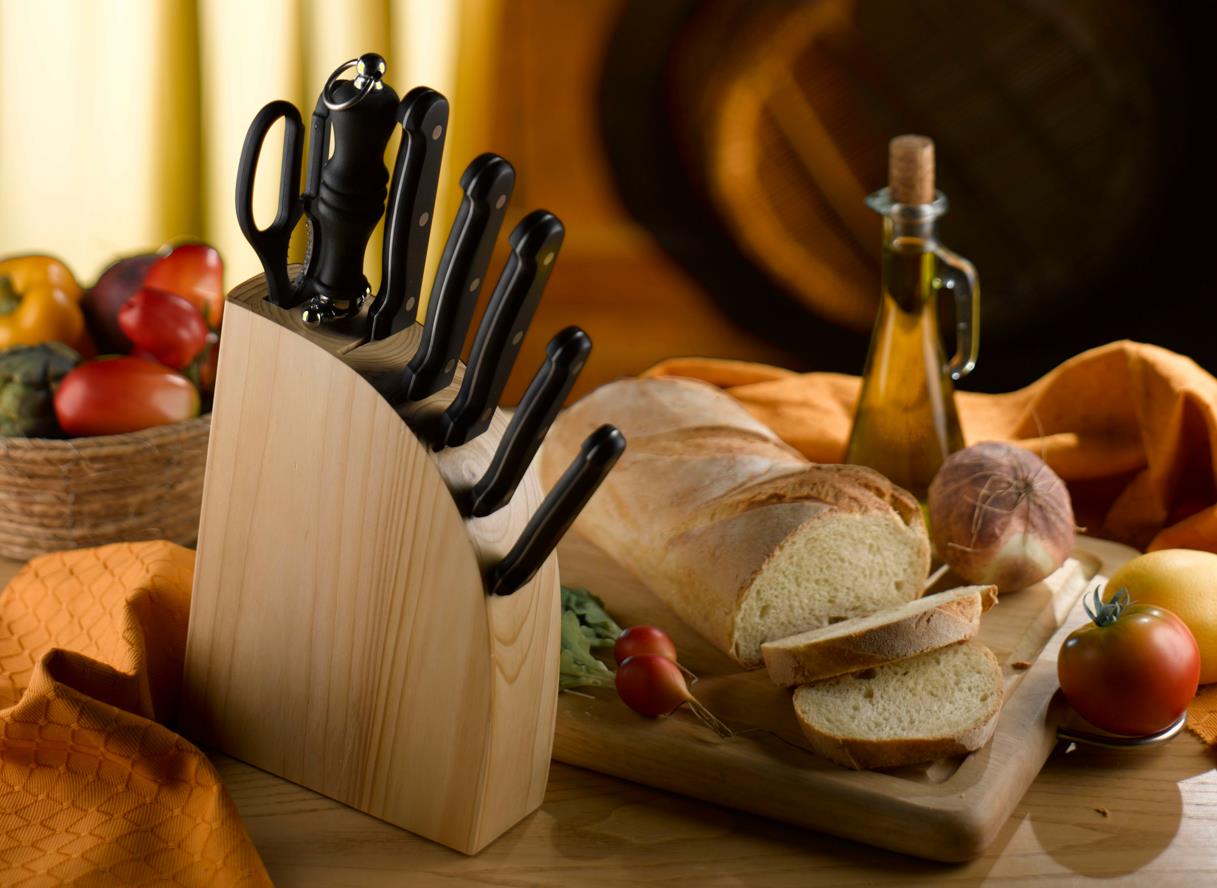
Good quality knives that you want to get performance and durability out of should NEVER be tossed into a drawer loose, to just jumble around in a pile. For starters, it’s a recipe for a cut when you’re digging around in the drawer trying to pull one particular knife out.
Secondly, it’s terrible treatment for your knife blades that are left exposed to moisture from badly dried cutlery and humidity that could warp and rust your knives. Having knives all piled on top of each other also leads to blade damage and wear as they bump against each other.
Apply one of the knife storage options from our list above ^ is a far better idea and will give you knives that last for many years.
Things to consider when buying your nakiri knife
Here’s a handy check list that you can use to make sure that you’re making the right buying decision.
| ITEM | ASK YOURSELF |
| Cost | Does your chosen knife fit in with your budget and are you getting the best quality you can afford? |
| Quality | Is the knife well made and crafted with care? |
| Features | Does the knife have the features advertised and proper for its use? |
| Availability | Does the supplier have stock readily available in case you need to return? Is it such a specialized knife that after-sales care will be affected? |
| Durability | Will this knife last me many years and is it relatively easy to maintain? |
| Warranty | How confident is the retailer in my knife? Do they offer a comprehensive warranty to stand by their product? |
| Customer Service | Are Customer Service staff readily available? What about after-sales care, will I be supported? |
Whether buying a Nakiri knife or any other type of kitchen knife, HDMD asks you to examine their quality range of hand crafted and lovingly made products.
We have something to suit the needs of pro chefs and home cooks alike, so do contact us via the site with any questions! Until we see you next time, chop those vegetables like a samurai with your useful and well balanced Nakiri knife – a gift to any healthy living home!









